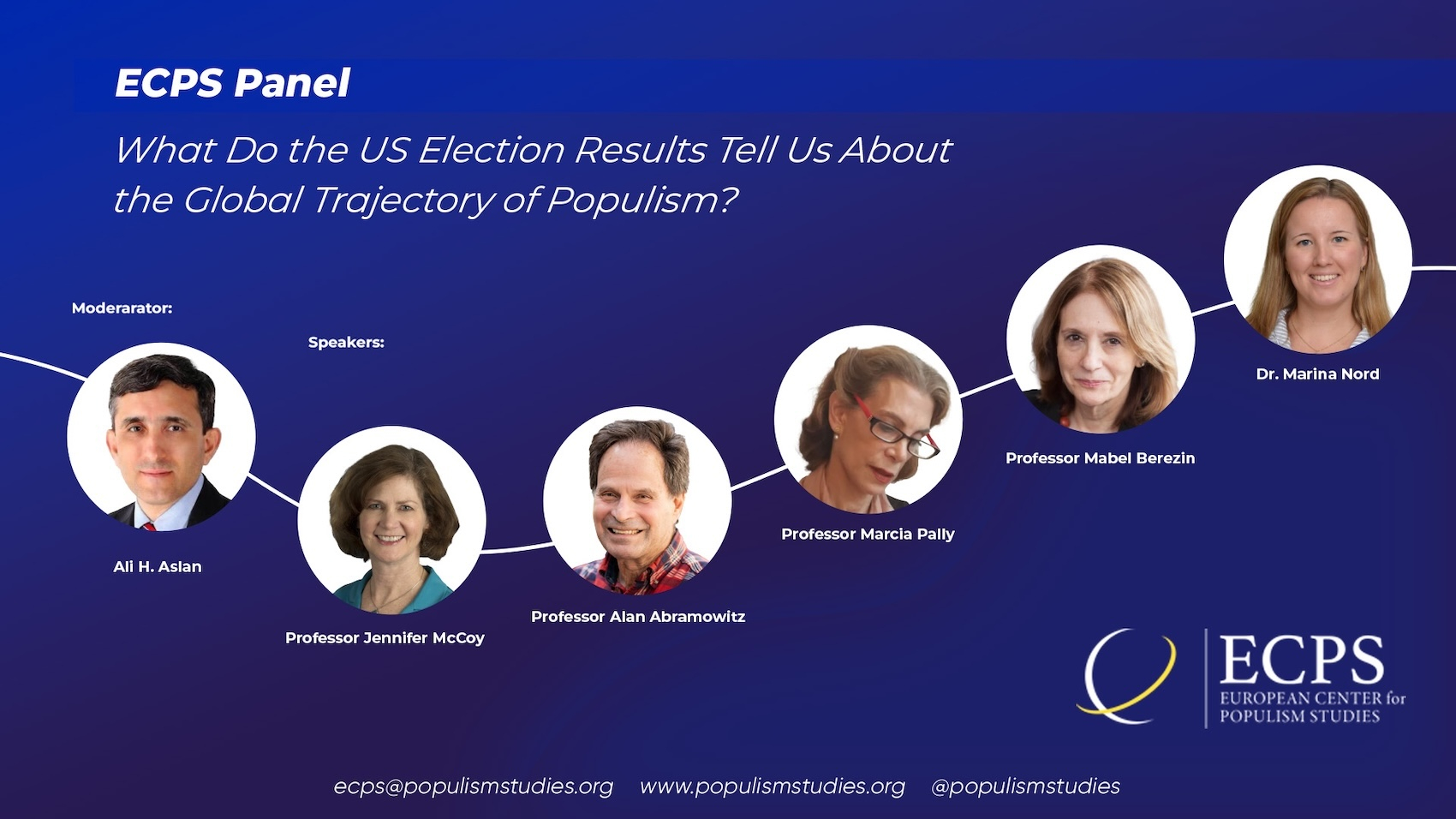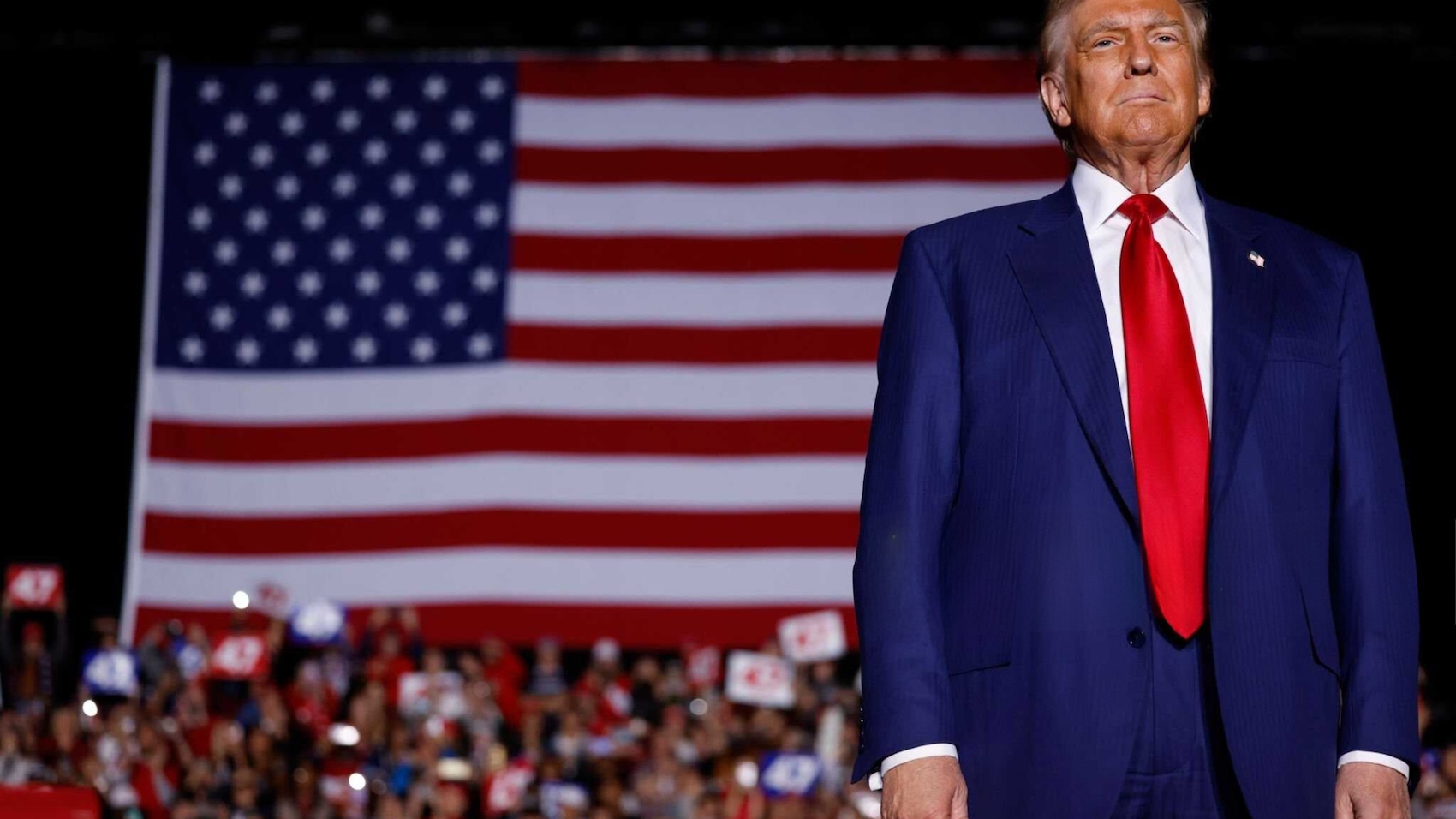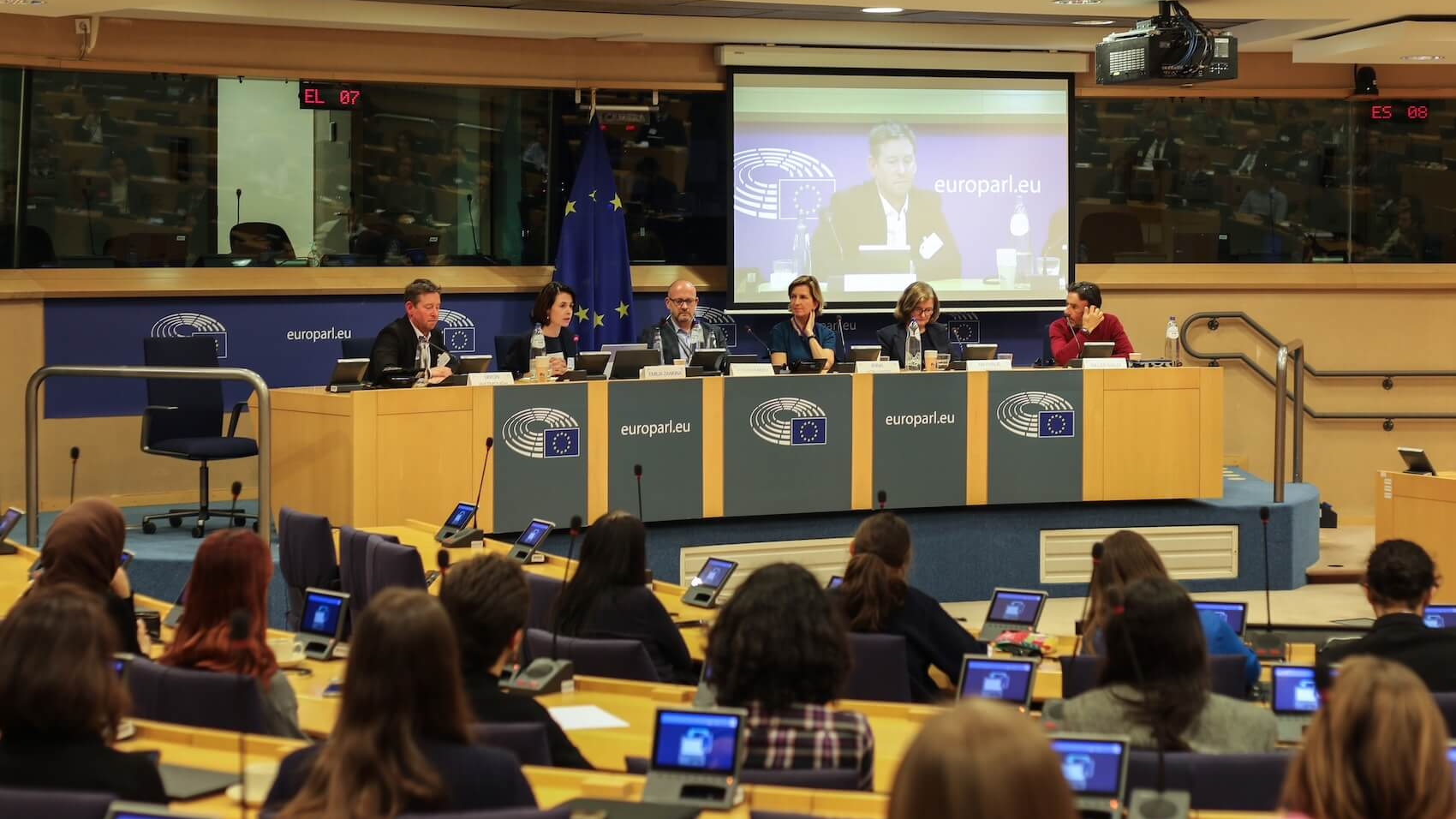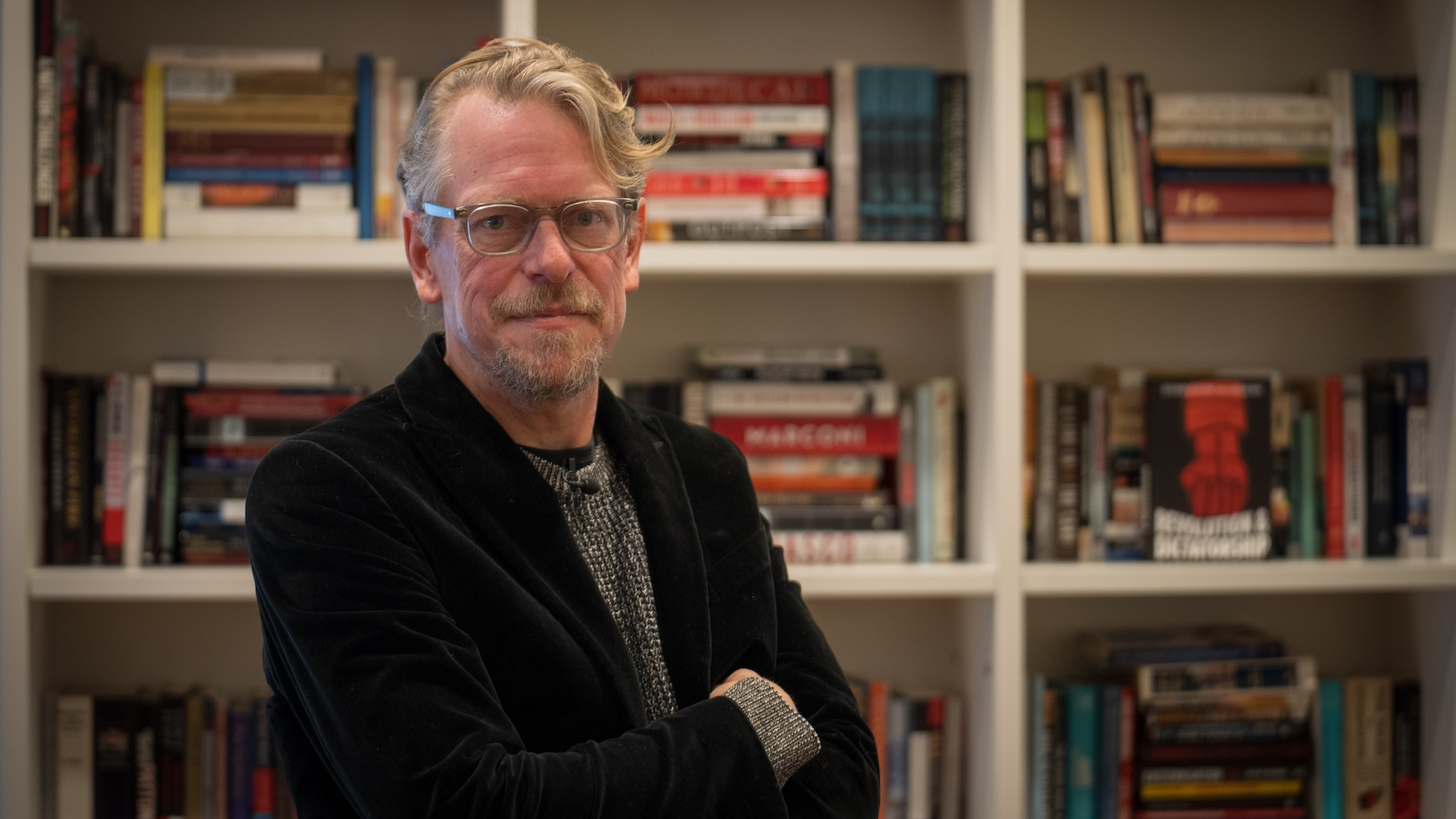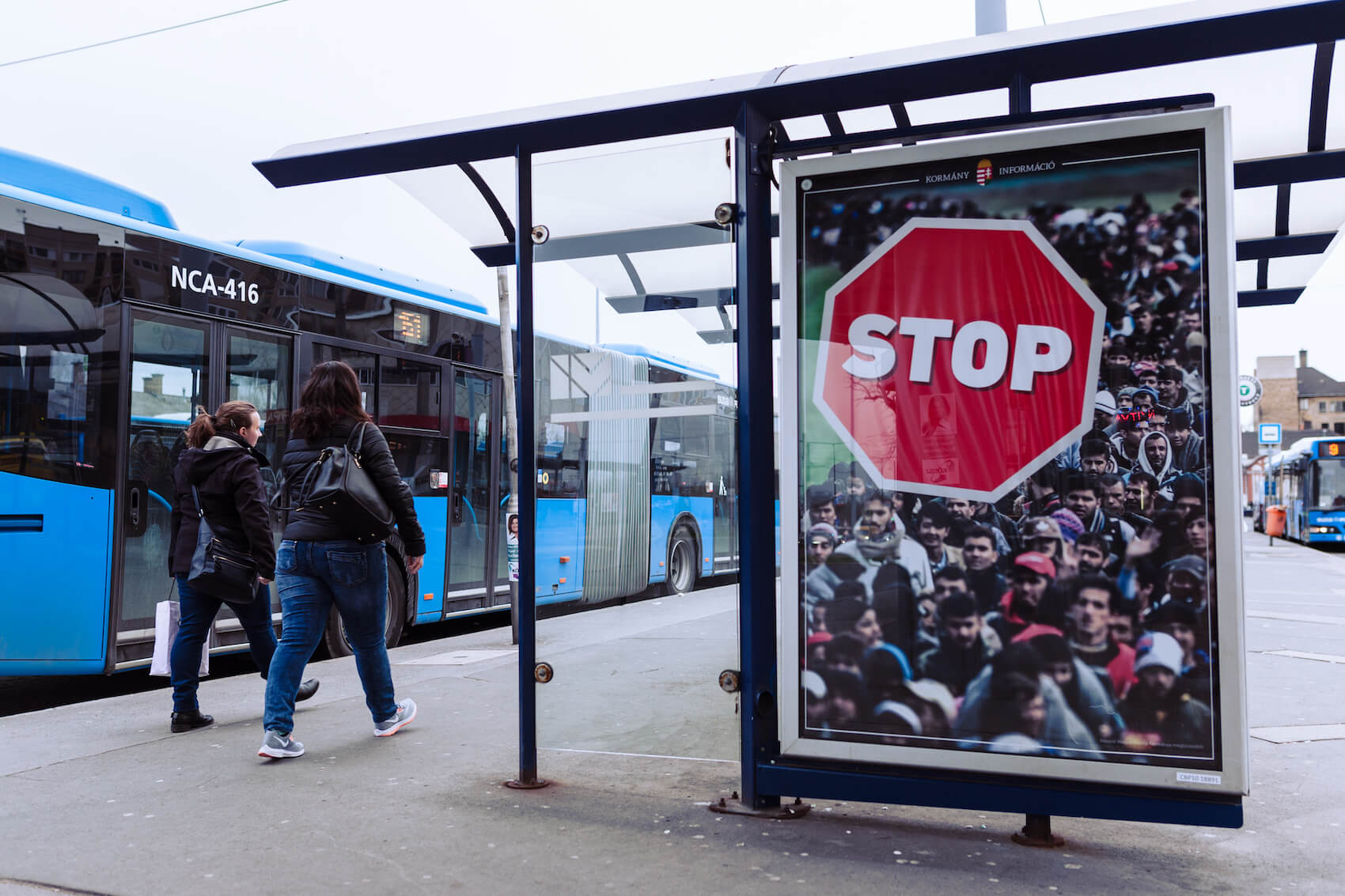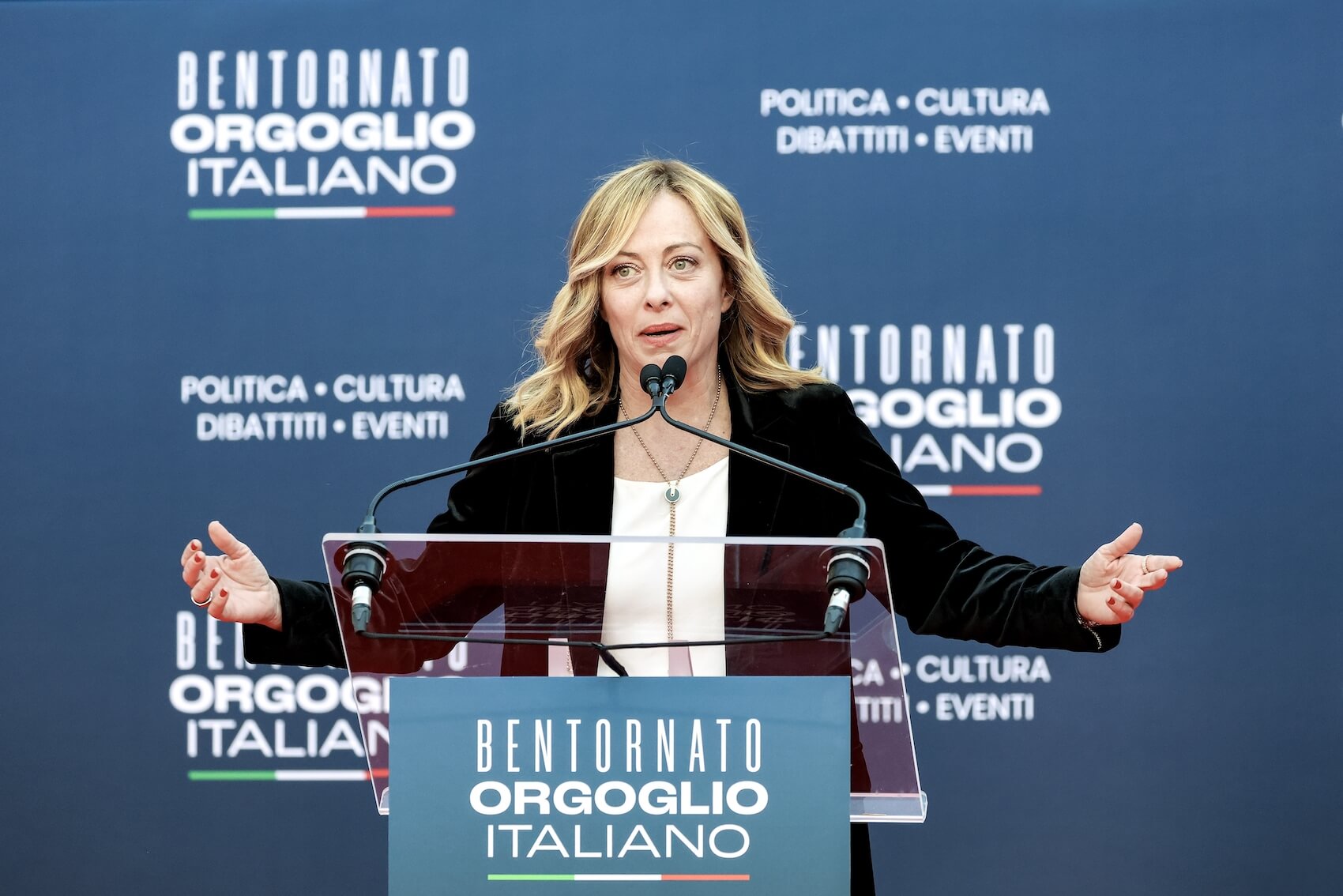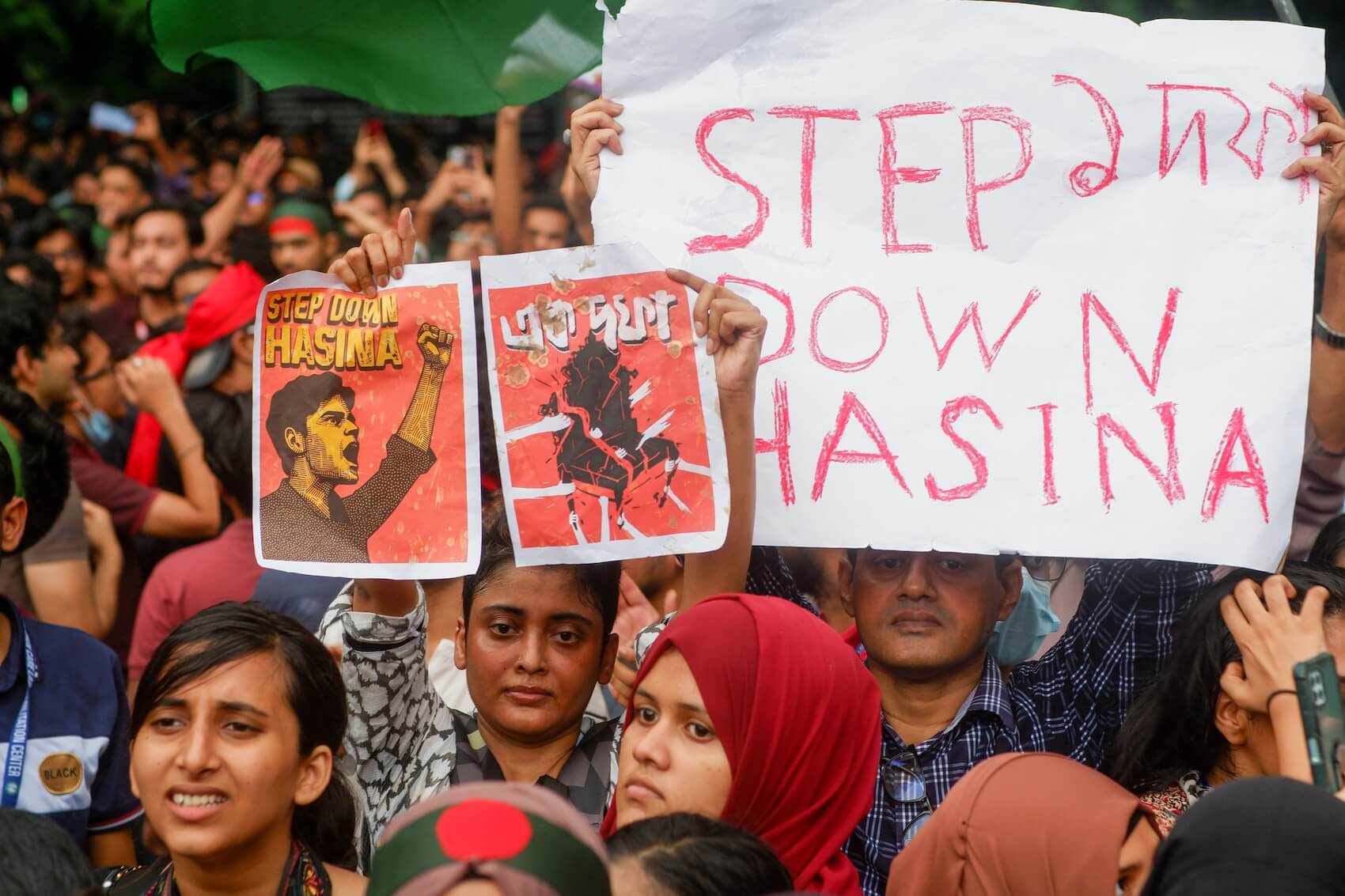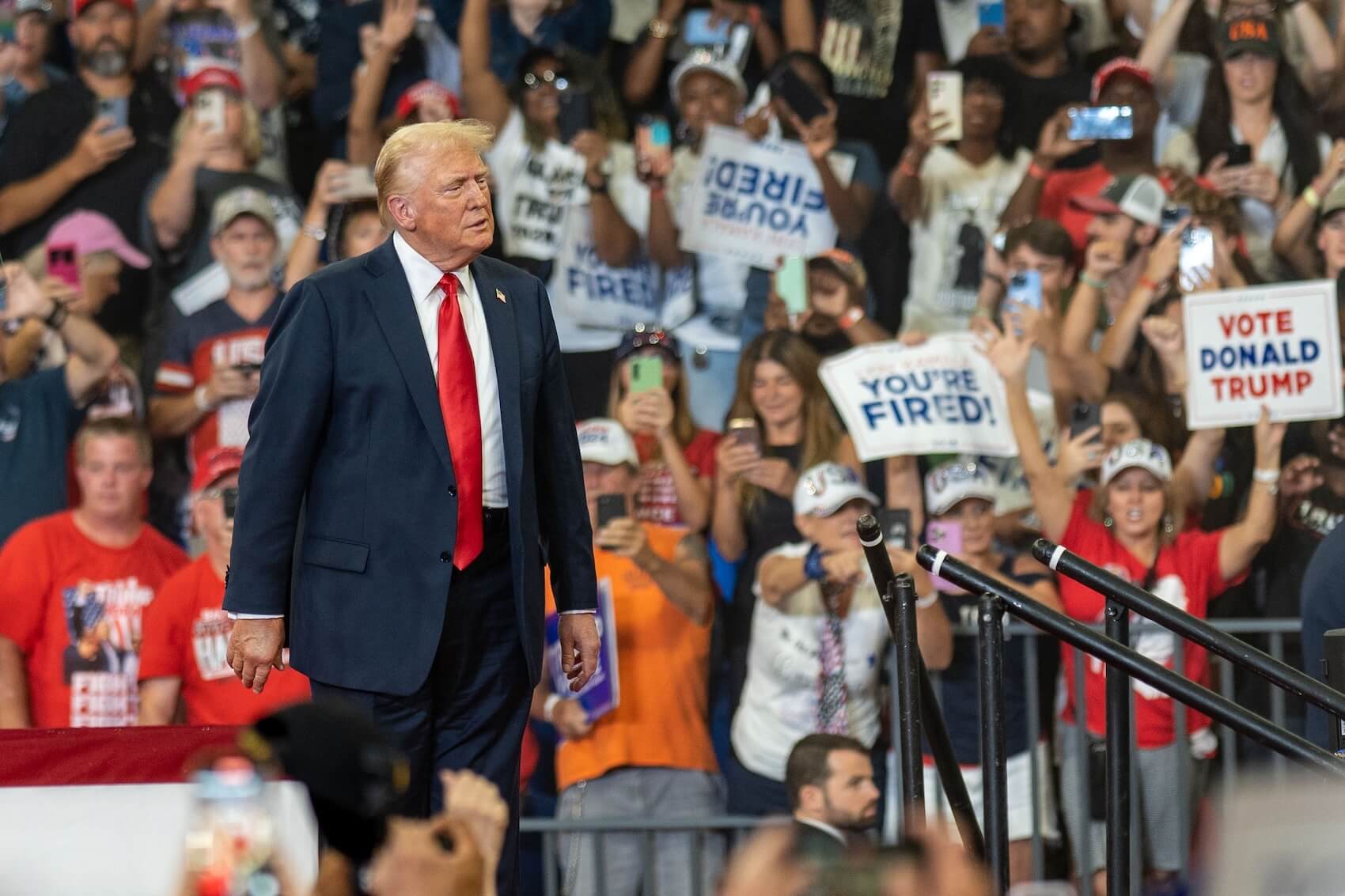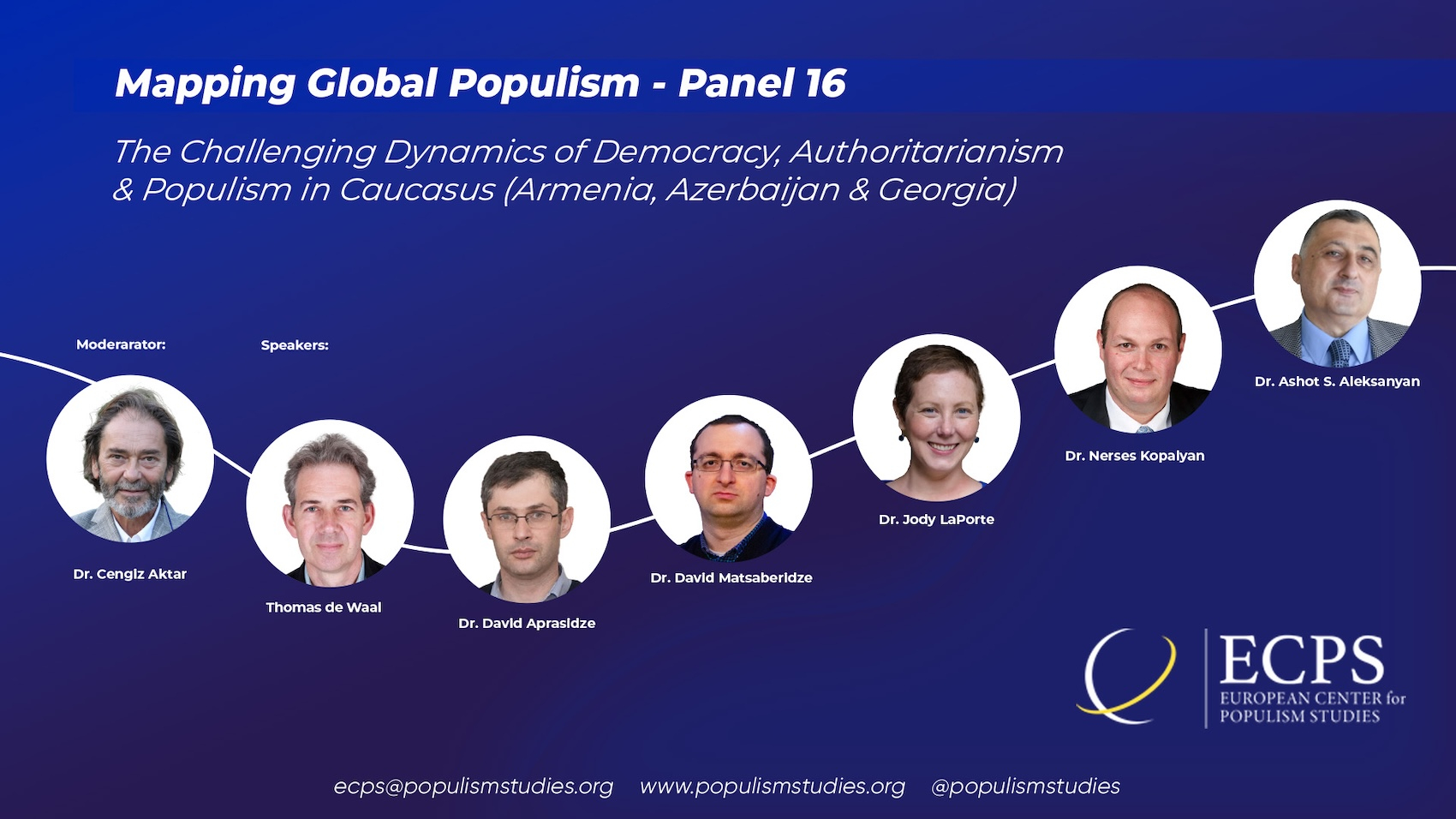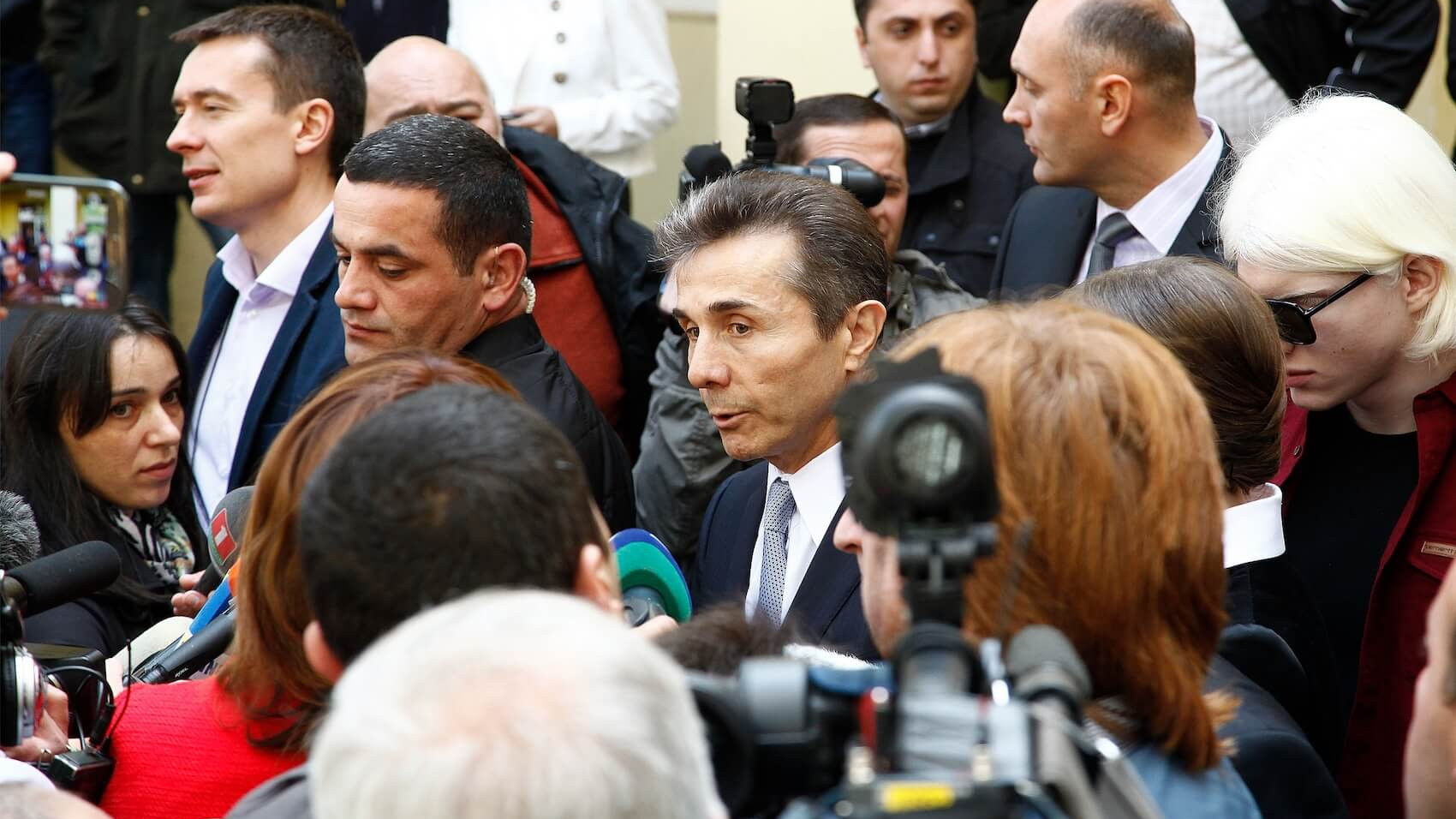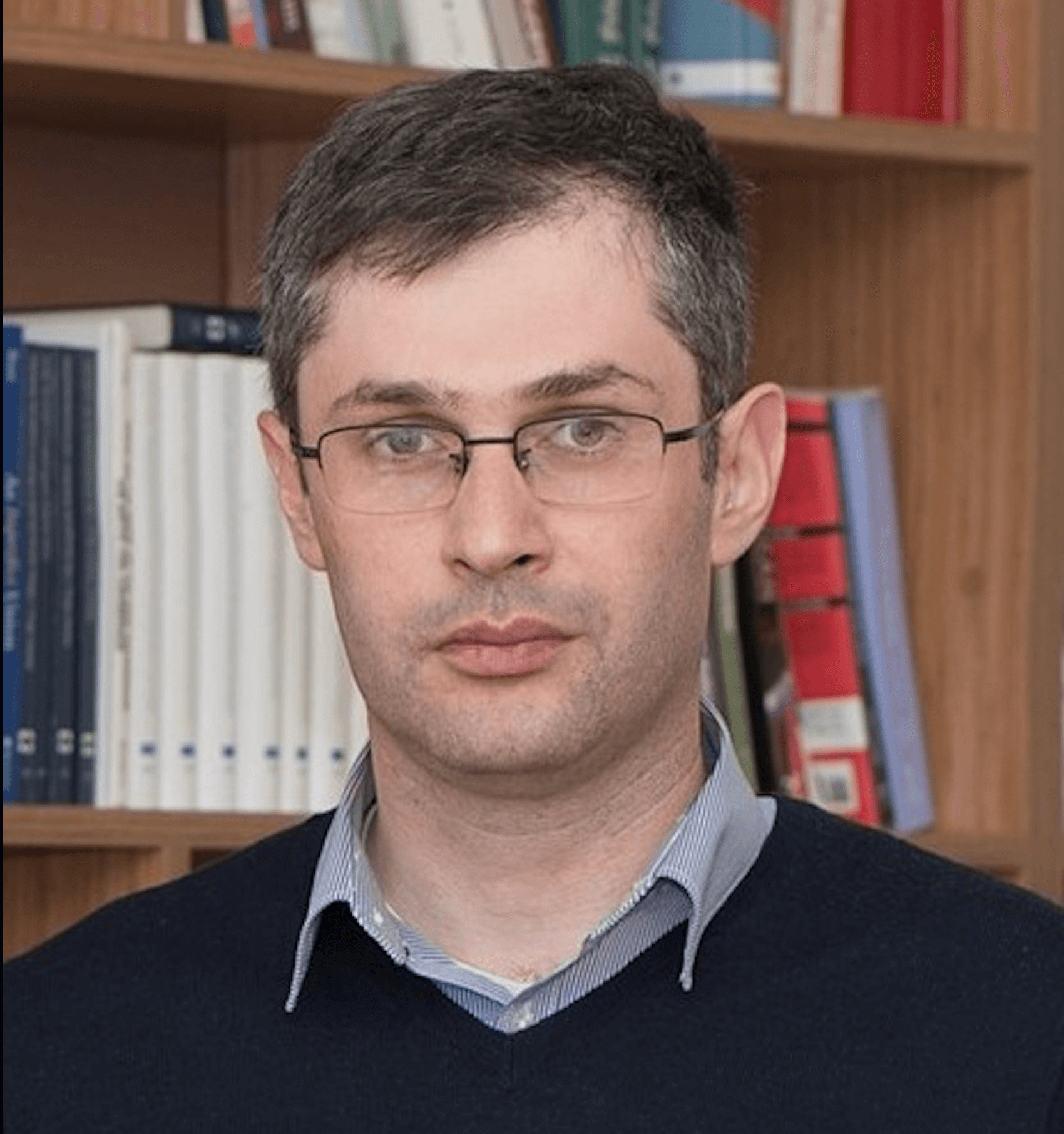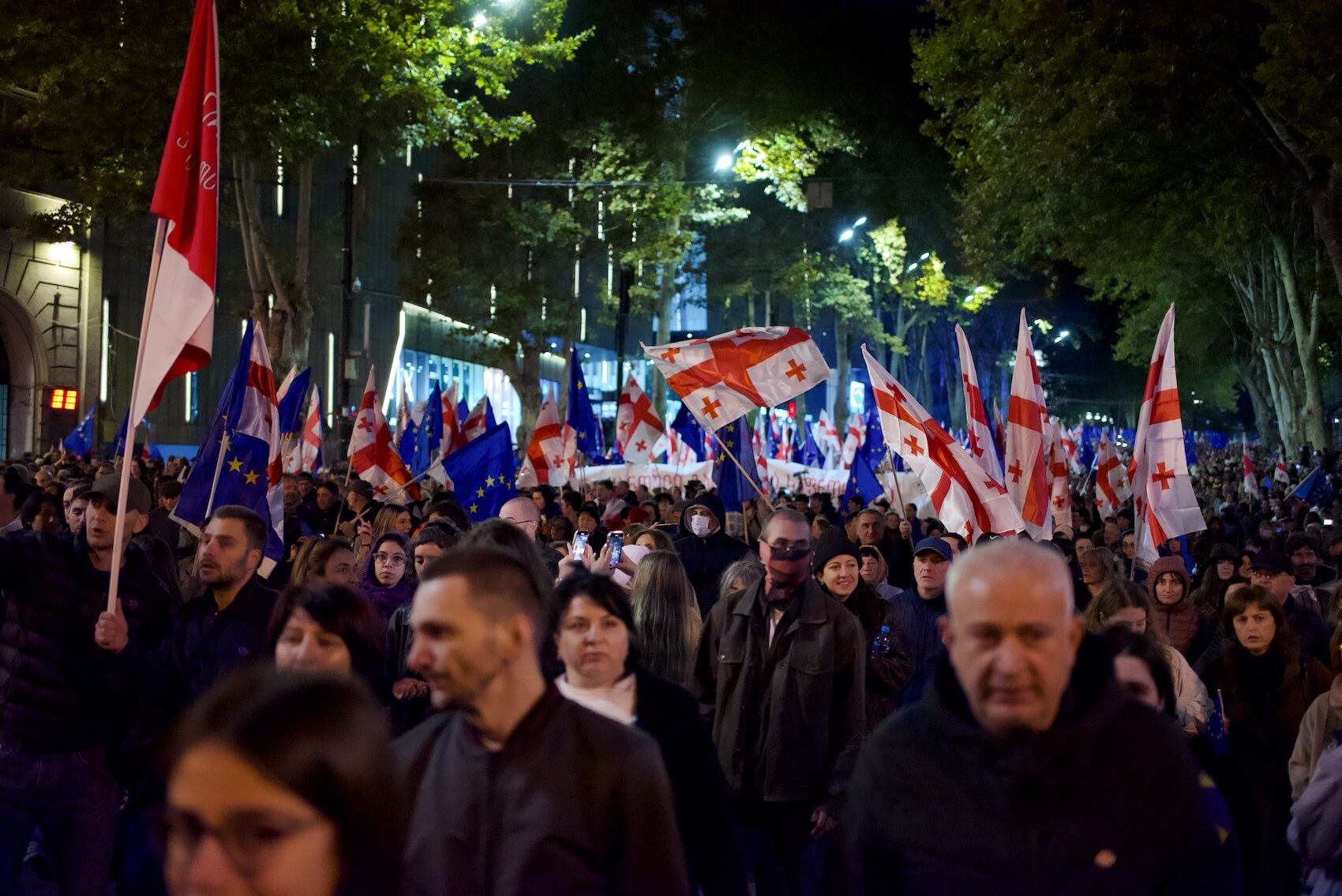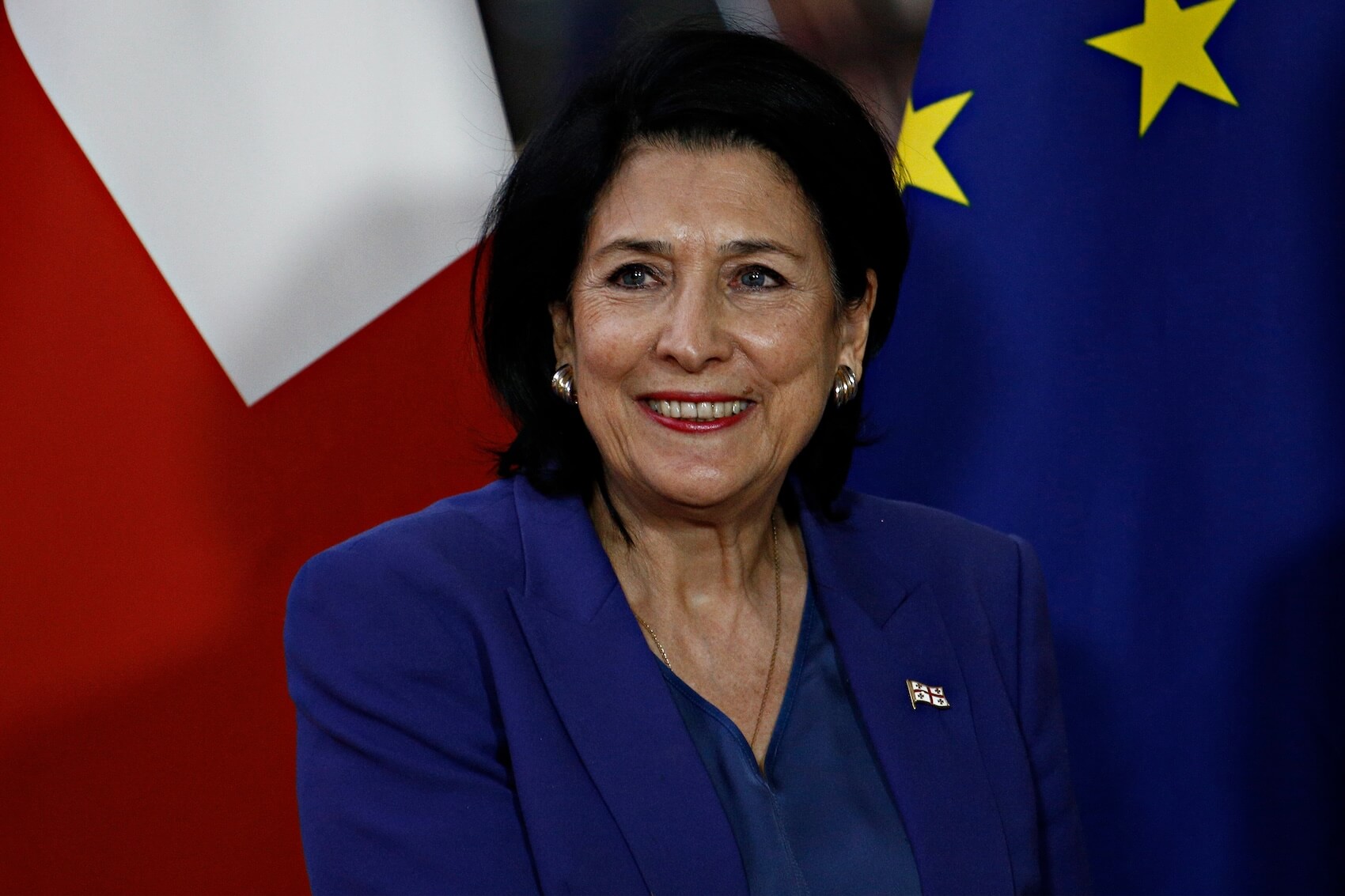Highlighting the dangers of overlapping corporate and governmental powers, Professor Paul Levinson cautioned, “I am deeply opposed to having the person who owns X also hold a high-ranking government position. That kind of overlap means the government could end up controlling communication platforms.” He elaborated on Musk’s ethical responsibility, stating that if Musk were a “true believer in free speech,” he would either divest from X or refuse a government post. However, Levinson expressed skepticism: “I think we both know he’s likely to do neither.” Levinson also voiced his deep concern for American democracy under a potential second Trump administration, describing it as “the worst threat to our democracy since the Civil War.”
Interview by Selcuk Gultasli
In a riveting interview with the European Center for Populism Studies (ECPS), Dr. Paul Levinson, Professor of Communication & Media Studies at Fordham University, discussed pressing concerns about the intersection of technology, politics, and democracy. Professor Levinson’s insights are especially timely, given Elon Musk’s rising influence as the owner of X (formerly Twitter) and his potential role in a second Trump administration. Highlighting the dangers of overlapping corporate and governmental powers, Professor Levinson cautioned, “I am deeply opposed to having the person who owns X also hold a high-ranking government position. That kind of overlap means the government could end up controlling communication platforms.”
Professor Levinson elaborated on Musk’s ethical responsibility, stating that if Musk were a “true believer in free speech,” he would either divest from X or refuse a government post. However, Professor Levinson expressed skepticism: “I think we both know he’s likely to do neither.”
Throughout the interview, Professor Levinson addressed the broader implications of concentrated power in technology. Despite concerns about billionaires like Musk or the owners of Facebook, Levinson pointed out that their influence has not yet stifled democratic impulses. “Social media provides a unique platform for individuals to disseminate the truth widely, even as it enables lies and fascism,” he noted, striking a balance in his evaluation.
On the issue of disinformation and algorithms, Professor Levinson argued that the negative impact of these technologies is often overstated. He acknowledged their role in targeted advertising, referencing Facebook’s data-sharing with Cambridge Analytica during the 2016 US election. However, he emphasized, “The blame lies not with the algorithms themselves but with the disinformation they are used to spread.”
Professor Levinson’s critique of governmental overreach was particularly sharp. Drawing historical parallels, he warned, “When governments gain such control, they can jeopardize democratic systems, even those that have existed for hundreds of years.” He cited the Thatcher administration’s suppression of unfavorable news during the Falklands War as a case study in the dangers of government-controlled communication.
Reflecting on Trump’s weaponization of “fake news,” Professor Levinson described it as a hallmark of fascism, akin to tactics used by Stalin and Hitler. He lamented, “It amazes me how many people have fallen for this tactic, despite the lessons we should have learned from history.”
Professor Levinson shared his deep concern for American democracy under a potential second Trump administration, describing it as “the worst threat to our democracy since the Civil War.” From absurd appointments to calculated assaults on institutions, Professor Levinson’s insights underline the precarious state of democratic governance in the digital age.
Here is the transcription of the interview with Professor Paul Levinson with some edits.
Democratic Impulses Persist Despite Billionaires’ Control Over Social Media

Professor Levinson, thank you so very much for joining our interview series. Let me start right away with the first question. How do you perceive the influence of hi-tech oligarchs, such as Elon Musk, on the digital public sphere? Does the concentration of digital platforms in the hands of a few individuals pose a unique threat to democratic discourse?
Professor Paul Levinson: Let me answer the second part of your question first. Everything new in communications can potentially threaten a democratic society. However, so far in our history—both the history of the United States and the history of democracies in general—new forms of communication have largely benefited democracy. In fact, they have often undermined dictatorships, autocracies, and oligarchies.
A notable example I often cite is the White Rose group in Germany during World War II. This courageous group of college students used a primitive Xerox machine to disseminate the truth about Nazi atrocities to the German public. Their efforts have always left a profound impression on me. Another example is from the final decade of the Soviet Union in the 1980s. There was something called Samizdat Video, a primitive video technology by today’s standards, but it was instrumental in undermining the autocracy of the Soviet regime, even under Gorbachev, who was probably the most enlightened Soviet leader.
With this historical perspective in mind, while I am always concerned about new technologies, I don’t believe social media presents an insurmountable threat to democracy. In fact, it cuts both ways. Social media enables lies, fascism, and the suppression of truth, which are central to fascistic systems. At the same time, social media provides a unique platform for individuals to disseminate the truth widely.
Now, regarding Elon Musk and other billionaires like those controlling Facebook, despite their unprecedented control over social media platforms, this has not yet prevented democratic impulses from finding expression through these platforms.
The Negative Impact of Algorithms and AI Is Often Overrated
How do you address concerns about the unchecked power of tech companies to shape public discourse, especially when their decisions significantly influence political narratives? In what ways do algorithms on social media platforms amplify populist narratives, and how much responsibility should platform owners like Musk take for the political polarization these technologies can create?
Professor Paul Levinson: First, we’ve heard a lot about algorithms, and more recently, about AI. I think the negative impact of these technologies is often overrated. One area where algorithms have proven particularly effective is targeted advertising. This was evident during the 2016 election in the United States when Facebook provided Cambridge Analytica with detailed data about users—what they were sharing, liking, and discussing on the platform. This data allowed the Trump campaign—who, in this regard, were ahead of the Democrats in recognizing its potential—to tailor their ads to specific audiences. For instance, the ads weren’t wasted on someone like me, who wouldn’t have voted for Trump under any circumstances because I already understood him for what he was.
This approach overcame one of the limitations of traditional advertising, where ads are broadcast to a wide audience via television, newspapers, or billboards, with no way to ensure they reach the right people. A significant portion of the ad spend is wasted because many viewers or readers are not the intended target audience. Algorithms, on the other hand, allowed for precision targeting, which made advertising far more efficient in this context.
The use of such algorithms in 2016, which allowed Facebook to share user data, is something that should be and has been controlled to some extent in the United States by agencies like the Federal Trade Commission. Preventing social media platforms from selling user data is an important step, and it does not interfere with free speech or the First Amendment.
As for algorithms spreading disinformation, the blame lies not with the algorithms themselves but with the disinformation they are used to disseminate. This raises the question of what can and should be done about disinformation on platforms like Twitter—now known as X—and other social media outlets.
Let me introduce an important concept here. In the United States, the First Amendment has never been intended, nor can it be used, to protect criminal communication. For example, if a group uses social media to plan a bank robbery, kidnapping, or murder, that communication is not protected. The government has a vested interest in preventing crimes before they occur.
So, the question is, what are the algorithms spreading? If they are spreading deliberate lies—such as disinformation about COVID-19—that result in harm or death, I believe that constitutes a crime and must be stopped. However, if they are spreading statements like, “Oh, we love Donald Trump! He was such a great President,” even though I strongly disagree with that sentiment, it is still acceptable. That is simply a part of the democratic system.
Do you believe governments or international bodies should regulate hi-tech oligarchs to prevent potential misuse of their platforms for political manipulation? If so, what should such regulations prioritize?
Professor Paul Levinson: This is another central topic. The real question here is: which is worse—the enormous power held by corporations and oligarchs, or governments regulating them?
The reason I frame it this way is that Trump has repeatedly made it clear that, if he returns to office, he plans to target cable media, broadcast media, and social media platforms that, in his distorted view, are spreading lies about him. For Trump, anyone who criticizes him is accused of delivering fake news and lying. He’s essentially attempting to flip the narrative.
The critical difference between the power held by the government and that wielded by massive corporations or billionaires like Elon Musk is that the government controls the military. In my view, this is the most significant threat to democratic systems. Trump has also spoken about using the National Guard to break up protests and take other actions that represent substantial steps toward establishing a fascist state in the United States.
While I don’t like billionaires having so much power, what concerns me even more is the government having the ability to stop communication and prevent people from sharing their ideas—whether or not I agree with those ideas—in the public sphere for others to read and comment on.
Once the government starts regulating communication, it’s a very short step to punishing dissent, arresting people, and throwing them in jail—exactly what the Nazis did in the 1930s. That’s a road I’m deeply concerned about.
Counter Lies with Truth, Not Suppression

Digital technologies have been tools for both democratic and populist movements. In your opinion, how can society harness these technologies to strengthen democratic values while mitigating their misuse by authoritarian populist leaders?
Professor Paul Levinson: This is a very long-standing issue. John Milton addressed it 400 years ago in his Areopagitica tract, where he argued for keeping the marketplace of ideas open. Milton believed that allowing both truth and falsity to exist in the same marketplace enables people to identify the truth and distinguish it from lies.
When you start regulating what can enter that marketplace, the government—or anyone trying to regulate it—could easily make a mistake or even deliberately suppress the truth while presenting it as false. This prevents people from making rational decisions. That, again, is what fascists do—they attempt to control the public sphere. By keeping the truth out of the public sphere, they can masquerade as truth-tellers while propagating lies.
Much more recently, here in the United States, one of the greatest Supreme Court justices in history, Louis Brandeis—so influential that a university in Massachusetts was named after him, Brandeis University—expressed a similar idea. Brandeis famously said that the best way to combat a lie is not to suppress it but to counter it with the truth. That’s how you destroy lies—by presenting the truth clearly and rationally.
Of course, some people are hopeless; no matter what you say, they won’t change their minds. But I’m an optimist and believe that most human beings are rational. Like John Milton and Louis Brandeis, I think the best way forward is to keep the marketplace of ideas as open as possible. This openness allows the truth to emerge and shine a light on the lies.
A Clear Line Must Be Drawn When Speech Leads to Criminal Activity or Endangers Lives
With Elon Musk’s vision of Twitter as a “public square” open to all opinions, how should social media platforms navigate the tension between upholding free speech and preventing the spread of harmful disinformation? How should actors like Musk balance their personal ideologies with their ethical responsibilities toward maintaining a fair and inclusive digital space?
Professor Paul Levinson: Well, again, the first question has to be addressed by considering whether the communication in question constitutes criminal activity. Are lives put in jeopardy because of such communication? If the answer is yes, then that communication should not be allowed on any platform.
The challenge, of course, lies in defining what constitutes criminal communication. Consider the example of Trump and the attack on the U.S. Capitol on January 6, 2021, which he incited after losing the 2020 election. Trump has since been indicted in multiple cases for criminal activity related to that attack. However, he maintains his innocence, and tragically, if he were to regain the presidency, he could potentially ensure that these cases are dismissed-a deeply unfortunate prospect.
That said, the Capitol attack was, in my view, unequivocally a criminal activity. The individuals involved were not patriots; they were part of a group that believed they could overturn the results of a democratically conducted election through violence, including threats to hang the Vice President for allowing the certification of electoral votes.
First, we must establish a consensus on what constitutes a crime. For example, during a pandemic that has already claimed millions of lives, deliberately spreading lies and deceiving the public about false cures is a clear case of criminal activity. In such instances, figures like Elon Musk have an ethical obligation to prevent this content from being shared on their platforms. If they fail to act, I believe the government has a duty to intervene to stop such harmful communication.
This brings us to the debate on the limits of free speech. Elon Musk presents himself as an absolutist regarding free speech, and we can certainly debate how far I or anyone else leans toward free speech absolutism. Personally, I draw a clear line when speech leads to criminal activity or endangers human lives. It is not difficult to identify such communications online, and when Musk fails to remove this kind of content, I believe he is culpable.
In such cases, the government—though certainly not under Trump, as he and Musk appear to be allies—has a responsibility to engage with Musk and press him to adopt more responsible policies.
Government Intervention in Communication Is Far More Dangerous
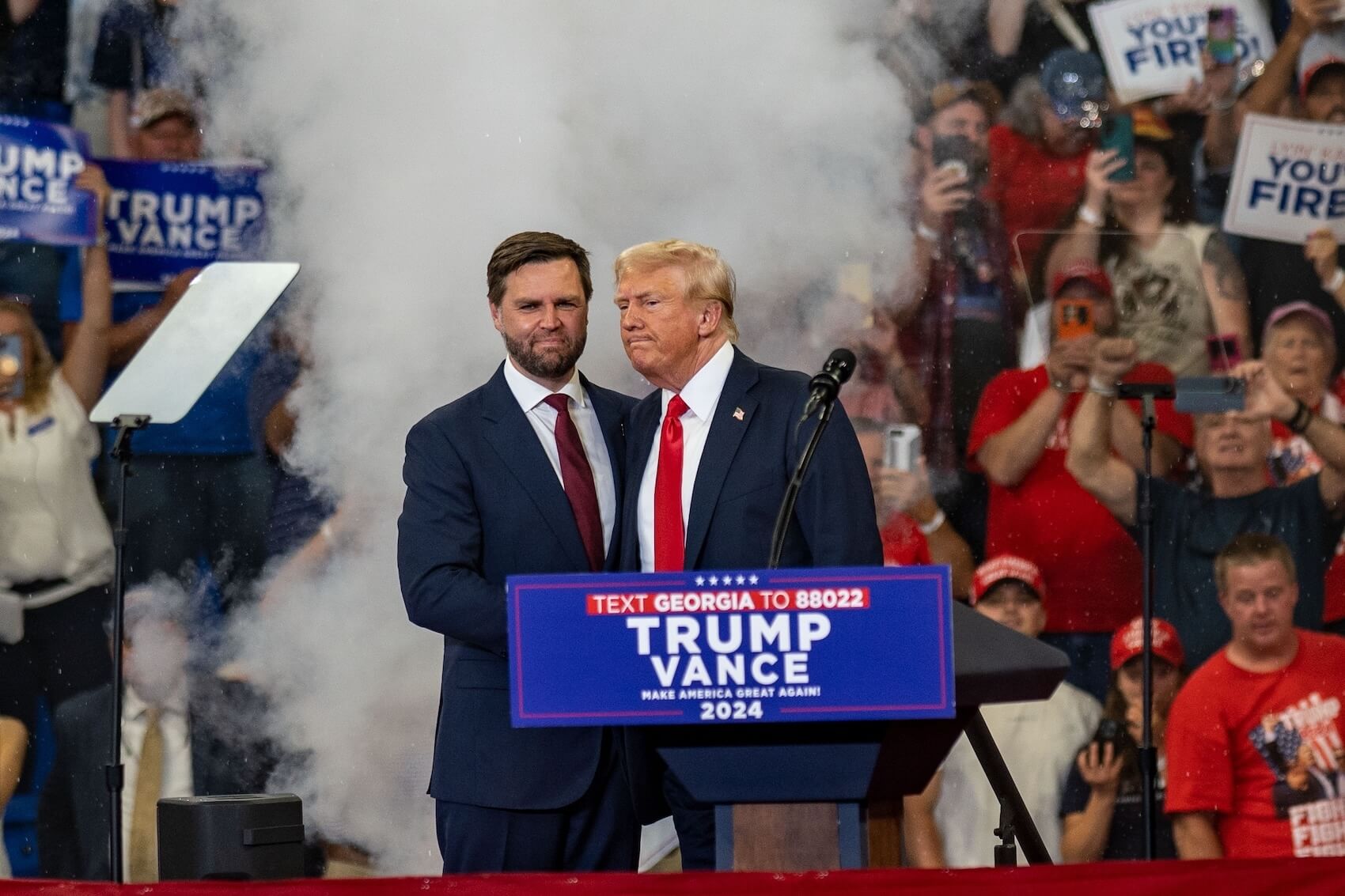
You argue that it’s concerning that tech executives can exercise so much power over who can use their platforms. But the alternative – government intervention – could be much worse. You argued this before Elon Musk was appointed to a significant post in the second Trump administration. Do you still think the same?
Professor Paul Levinson: Yes, because, as I mentioned, the government wields military power. While corporations can be problematic, and it is undeniably concerning for the richest person in the world to hold so much power that they can essentially do whatever they want—even if they lose millions of dollars and still remain the wealthiest—it is far more dangerous for the government to be involved in communication.
Let me give you another example of this—a relatively minor one, but still important. Some people may remember the Falklands War in the 1980s. Argentina wanted the United Kingdom to relinquish control of the Falkland Islands, which are located off Argentina’s coast. Understandably, Argentina questioned why the UK was still holding on to these islands, which they had seized during the colonial era.
At that time, Margaret Thatcher was the Prime Minister of the UK. She wanted to project toughness and refused to give up the islands, leading to war. The BBC, the British Broadcasting Corporation, unlike media systems in the United States, is not independent of the government. It is part of the British government, and naturally, it reported on the war.
One day, the Argentine forces inflicted significant damage on the British Expeditionary Force in the Falklands. The British government, under Thatcher, didn’t want the British public to know about this, fearing it would provoke public outrage. So, they instructed the BBC not to broadcast or report the news.
This demonstrates the immense power of governments, even in democracies like the United Kingdom. The government effectively told the nation’s primary broadcasting organization, “Don’t report that.” This is precisely the kind of government overreach that concerns me here in America and across Western democracies, where fascist tendencies have been gaining ground.
When governments gain such control, they can jeopardize democratic systems, even those that have existed for hundreds of years. This is why I continue to believe that government intervention in communication is far more dangerous than the unchecked power of tech executives.
Violating the Spirit of the First Amendment Is Not as Severe as Violating the First Amendment Itself
You declare yourself a First Amendment radical, i.e., a staunch supporter of the First Amendment, which says Congress shall make no law abridging free speech. Yet, you have supported Twitter’s ban on Donald Trump. Don’t you think there is a contradiction between these two positions? Where should the ethical line be drawn for social media platforms when balancing freedom of expression with the risk of harm caused by certain types of speech?
Professor Paul Levinson: First of all, I’d like to draw a distinction between the First Amendment itself and what I call the spirit of the First Amendment.
The First Amendment says, “Congress shall make no law abridging freedom of speech or the press.” Through the 14th Amendment, which was enacted after the Civil War in the 1800s, this prohibition on federal government interference with communication was extended to state governments and, in general, to municipalities, including cities. Over the years, the Supreme Court has correctly ruled that no government can interfere with communications—again, unless it involves some kind of criminal activity. That’s the First Amendment.
Now, let’s take an example like the Grammy Awards. These awards, given for the best music in a given year, are broadcast on American television stations like CBS. During a rap artist’s performance, where cursing and vulgarity are often part of the genre, viewers might hear bleeps censoring certain words. What’s happening there? CBS is bleeping those words because they fear their sponsors might object, or that the Federal Communications Commission (FCC) might penalize them by refusing to renew their license.
For the record, I believe the FCC is unconstitutional because it violates the First Amendment—it’s a government agency that interferes with communication. Nevertheless, CBS’s actions, while cowardly in my opinion, do not violate the First Amendment. Instead, they violate the spirit of the First Amendment because CBS is not the government.
Similarly, when Elon Musk or, before him, the previous owners of Twitter banned Donald Trump from the platform, they were not acting as representatives of the government. In Trump’s case, his tweets were rightly perceived as contributing to the instigation of the attack on the Capitol in January 2021—a criminal activity. For this reason, I believe banning him from the platform was the correct decision. However, this action was taken by a private social media company, not the government. As such, while it may have violated the spirit of the First Amendment, it did not violate the First Amendment itself.
In general, my position is that the spirit of the First Amendment should be respected, as censorship is rarely beneficial. However, violating the spirit of the First Amendment is not as severe as violating the First Amendment itself.
To illustrate a clear violation of the First Amendment, consider when President Richard Nixon attempted to prevent The New York Times and The Washington Post from publishing the Pentagon Papers. Nixon argued that publishing the papers would undermine his war effort in Vietnam. Fortunately, the Supreme Court correctly ruled that such an action would violate the First Amendment and voted against Nixon, affirming that a US president cannot impose restrictions on what newspapers can publish. This case represents a classic and correct application of the First Amendment.
The Danger of Elon Musk Holding Power in Both Government and Social Media

You suggest that market forces can effectively counterbalance the dominance of tech giants, as seen with Microsoft’s decline in influence. Do you believe similar market corrections are plausible for current tech behemoths like Twitter or Amazon, given their role as gatekeepers of global communication?
Professor Paul Levinson: Yes, I do. Let’s go back to what I was saying about Microsoft. This happened in the 1990s when Microsoft was at its peak, and Bill Gates was probably the richest man in the world. There was a lot of talk about breaking up Microsoft—claims that it had a monopoly, too large a market share, and that this dominance was unhealthy for the intellectual and economic well-being of the country.
Even back then, I said, “Take it easy.” The market will regulate itself; there’s no need to rush into breaking up the Microsoft corporate system. People were reacting to something that had only happened in the last year or two. I suggested we wait and see what would happen. Sure enough, by the late 1990s and into the 21st century, Microsoft’s influence had already started to decline, and new giants like Amazon were beginning to grow.
Once again, I am more concerned about the government regulating any communication system than I am about the damage caused by such systems. Consider Donald Trump returning to the White House—he’s already naming some of the bizarre people (and that’s putting it kindly) he plans to appoint to important positions in his cabinet and administration.
The last thing I want to see is a scenario where the government goes after MSNBC, an important progressive voice in cable television, or NBC as a whole, claiming they have too much power and must be broken up. That kind of government intervention poses a greater threat to democracy than allowing corporate systems to continue operating.
Now, I’m not saying I’m thrilled about the power Elon Musk holds. In fact, I need to emphasize this point: Trump has stated he wants to put Musk in charge of a new government agency tasked with making the government more efficient. While I’m all for making the government more efficient, I am deeply opposed to having the person who owns X (formerly Twitter) also hold a high-ranking government position. That kind of overlap means the government could end up controlling communication platforms.
As for Musk, I’m not overly concerned about most of the things he’s done so far. What does concern me is the idea of him simultaneously being a member of the new administration and maintaining his powerful position at X. If Musk were a true believer in free speech, he would either divest himself of X or refuse the government post. But I think we both know he’s likely to do neither.
Projection Is a Hallmark of Fascism
You argue that Donald Trump turned the concept of “fake news” into a tool to undermine legitimate media. What long-term impact do you think this has on public trust in journalism and the democratic process?
Professor Paul Levinson: It’s already had a very negative effect, and it’s one of the worst things Donald Trump has done. I remember watching television back in January 2017, shortly after Trump had been elected president in the 2016 election. As president-elect, he was holding a news conference here in New York City. At the end of the conference, reporters raised their hands to ask questions.
A prominent CNN reporter, Jim Acosta, raised his hand, and Trump looked at him and said, “I’m not going to call on you. You’re with CNN, right? You’re fake news.” I remember thinking, “Wow, that’s a pretty clever thing Trump is trying to do.”
CNN was not spreading fake news in any way. It was truthfully reporting on things that made Trump look bad. For Trump, however, anything that embarrasses or criticizes him is automatically labeled as “fake news.” Whether the idea originated with Trump or one of his advisers, it’s a brilliant but dangerous way of undermining criticism.
This tactic reflects what Sigmund Freud called projection. When we look at the world and disagree with someone, we project our own intentions onto them, accusing them of doing what we plan to do. This, in turn, justifies actions against them. Projection is a hallmark of fascism. It’s something Hitler did. It’s something Stalin did. Stalin referred to the press as the “enemy of the people,” which is another favorite term of Trump. In Nazi Germany, during the 1930s, Joseph Goebbels popularized the term Lügenpresse, meaning “lying press”—essentially, fake news.
What amazes me is how many people have fallen for this tactic in 2024, and indeed, over the past decade, despite the lessons we should have learned from the 1930s. Unfortunately, it highlights just how ignorant many people are of history.
The Greatest Threat to American Democracy Since the Civil War
How do you think American people and American institutions will react to second Trump administration?
Professor Paul Levinson: I don’t know, and I have to tell you, I am deeply concerned. I think the United States of America is facing the worst threat to our democracy since the Civil War.
The election results obviously surprised and stunned a lot of people. I’ll just note, parenthetically, that once again, the polls were off. They predicted a razor-close race. While Trump didn’t win by a landslide, he did secure an impressive victory. Even here in New York State, where the Democrats won, they did so by a smaller margin than Joe Biden or even Hillary Clinton had achieved.
This election revealed a significant aspect of American life and I thought that many, including myself, didn’t fully recognize before the election. It’s a deeply troubling realization. As historians know, it’s not as though Germany had an autocratic system in place before Hitler’s rise to power. The Weimar Republic was actually a strong democracy with a robust constitution.
Fascism often doesn’t seize power through a coup d’état—though that can ultimately happen—but rather by undermining democratic systems and turning them against themselves. That’s what makes this such a deeply concerning time.
I’m an optimist, so I hope that the worst won’t happen. But at this point, it just remains to be seen.
Trump’s Appointments Are Not Just Concerning, They Border on Absurdity

And lastly, Professor Levinson, there are those who are deeply concerned about the future of American democracy under a second Trump administration. Some argue that American democratic institutions may not survive. Where do you stand in this debate?
Professor Paul Levinson: Well, as I just said, I’m very worried. During Trump’s first administration, many of the people he appointed seemed to operate under the mistaken belief that, while Trump might be a little unhinged, they could keep him in check. They thought they knew what was right and would steer him accordingly. Trump’s response to that? He fired anyone who disagreed with him.
He famously dismissed James Comey, the FBI director, and Rex Tillerson, his Secretary of State. Trump became infamous for firing people, both in his presidency and on The Apprentice. This time around, however, he’s being much more calculated in his appointments.
The only person he has appointed so far who, in my view, is not completely unfit for the role is Marco Rubio, a senator from Florida who is now Secretary of State. While I don’t agree with Rubio’s policies, at least he’s not irrational. Unfortunately, the same cannot be said for many of Trump’s other appointees.
For example, Matt Gaetz, recently appointed Attorney General, was until recently a member of the House of Representatives. He resigned to take this post despite being the subject of an investigation involving allegations of sex trafficking, including minors. The idea of someone with such a history holding the top legal position in the country is deeply troubling.
Then there’s Dr. Mehmet Oz. Yes, he’s an MD, but he hasn’t practiced medicine in years and is better known as a television personality. He’s been appointed to lead the CDC or a similar health organization—it’s hard to keep track.
Or take Robert F. Kennedy Jr., who has been appointed Secretary of Health. While he’s Robert F. Kennedy’s son, his anti-vaccine stance goes against the very measures that saved millions of lives during the COVID pandemic. These appointments are not just concerning; they border on absurdity.
At this point, I’m holding out hope that the Senate, which is currently split 50-50 between Democrats and Republicans, might reject some of these nominees. However, it’s unclear whether that will happen. I don’t have a crystal ball, but if I did, I’d see nothing but clouds and stormy weather ahead. Unfortunately, I can’t see through the storm.


